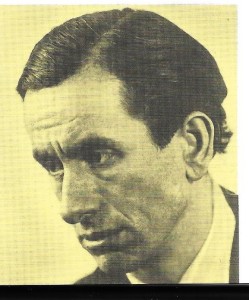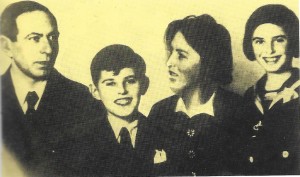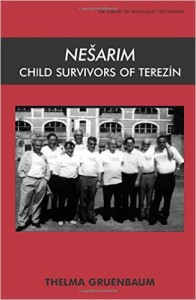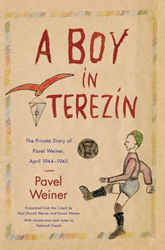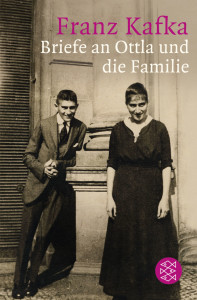Ilse Weber was a Czech Jewish poet and songwriter best known for the children’s songs she composed, including some she wrote while imprisoned in Terezin. Born Ilse Herlinger in Ostrava, Czechoslovakia, she learned to play a variety of instruments as a child, including the guitar and mandolin though she did not study music formally.
In 1930, at the age of 27, she married Willi Weber and moved with him to Prague, where she became known for the articles she wrote for children’s magazines. She also wrote a children’s book Mendel Rosenbusch: Tales for Jewish Children and produced pieces for a Czech radio station. In 1939, after the Nazis occupied Czechoslovakia, Ilse and her husband managed to secure a place on a Kindertransport for their older son, Hanus, who survived the war in Sweden. Unfortunately, Ilse, her husband, and their younger son Tommy were unable to escape and were sent to Terezin in February 1942.
At Terezin, Ilse worked as a nurse in the children’s infirmary, caring for the children as best she could despite the lack of medication and supplies. She also wrote more than 60 poems, some of which she set to music and performed for the children, accompanying herself on a guitar.
In October 1944, Ilse’s husband Willi was assigned to a transport to Auschwitz. Many of the children Ilse cared for were also on the transport. Worried about the children, and wanting her family to be together, Ilse decided to join the transport with her son Tommy. Ironically and tragically, Ilse and Tommy were murdered in the gas chambers of Auschwitz upon arrival, while Willi survived the camps and outlived them by thirty years.
Many of Ilse’s poems survived the war, and were published in a 1991 book entitled Inside These Walls, Sorrow Lives. Some of her songs were later recorded by others singers, most notably her Terezin lullaby, “Wiegala”. Ilse’s surviving son Hanus Weber has also commemorated his mother and her work through his participation in various cultural programs honoring her work. Hanus also published a book called Ilse Weber: A Love Story Without a Happy Ending, a tribute to the gifted, compassionate mother who saved him from the Nazis.
https://www.youtube.com/watch?v=Y_CfMk53AEU
Rendition of Ilse Weber’s lullaby (Wiegala) set to a slideshow of pictures of Ilse.
